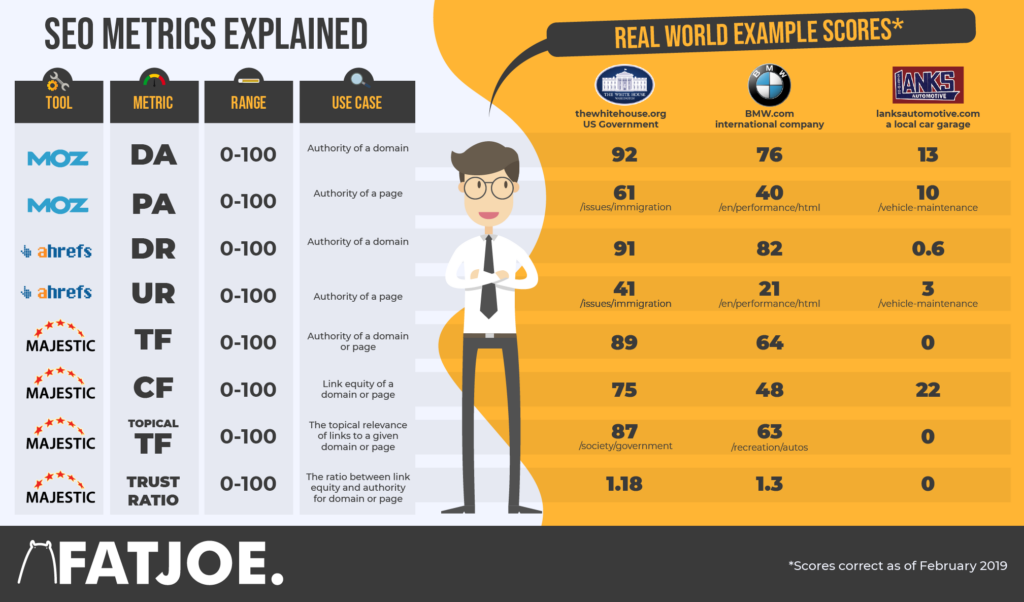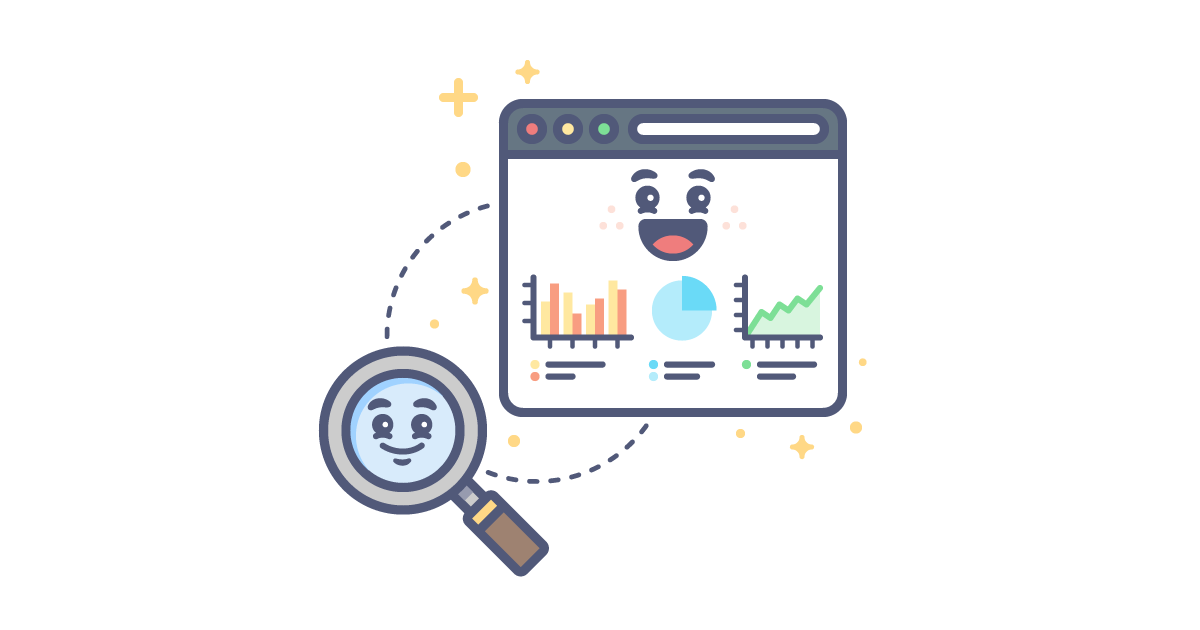Unlock the secrets to improving your website’s performance with these crucial SEO metrics that will take your digital strategy to the next level.

Image courtesy of via DALL-E 3
Table of Contents
Introduction to SEO Metrics
In the vast digital landscape of the internet, websites strive to stand out and attract visitors. This is where SEO metrics come into play. SEO, which stands for Search Engine Optimization, is the art and science of making your website more visible and appealing to search engines like Google. Understanding SEO metrics is key to unlocking valuable insights into how your website is performing and how to improve its visibility.
What is SEO?
SEO is like a secret code that helps search engines understand what your website is about and how relevant it is to a user’s search query. By using the right keywords and optimizing your content, you can boost your website’s ranking in search results, making it more likely to be seen by potential visitors.
Why Metrics Matter
Metrics are like the scorecards of the digital world. They provide key information about how many people are visiting your website, how they are interacting with your content, and whether your SEO efforts are paying off. By tracking and analyzing these metrics, you can make data-driven decisions to enhance your website’s performance and reach your online goals.
Traffic Metrics
Understanding how many people are visiting your website is crucial for tracking its performance. By analyzing different traffic-related metrics, you can gain valuable insights into the reach and engagement of your site. Let’s delve into some key traffic metrics that can help you understand your website’s audience.
Page Views
A page view represents a single instance of a visitor viewing a particular page on your website. Each time a visitor clicks on a page and loads its content, it counts as a page view. Page views can give you an idea of which pages are popular among your audience and how engaging your content is.
Unique Visitors
Unique visitors refer to the number of distinct individuals who have visited your website within a specified time frame. This metric provides insight into the actual number of people accessing your site, regardless of how many times they visit. It helps you understand the size of your audience and the level of interest in your content.
Sessions
A session is a period of time that a user is actively engaged with your website. It starts when a user enters your site and ends after a period of inactivity or when they leave. Tracking sessions can reveal how users interact with your site, including the pages they visit, the duration of their visits, and whether they perform any desired actions.
Engagement Metrics
In addition to tracking traffic to your website, it’s crucial to understand how users interact with your content. Engagement metrics provide valuable insights into the effectiveness of your website and can help you make improvements to better engage your audience.

Image courtesy of www.infotech.com via Google Images
Bounce Rate
The bounce rate measures the percentage of visitors who leave your website after viewing only one page. A high bounce rate can indicate that visitors are not finding what they are looking for or that your content is not engaging enough. Keeping your bounce rate low is important to retain visitors on your site and encourage them to explore further.
Average Time on Page
The average time on page metric tells you how long, on average, visitors stay on a particular page before moving on. A longer average time on page suggests that visitors are spending more time engaging with your content. This metric can help you identify which pages are resonating with your audience and which may need improvement.
Pages Per Session
Pages per session indicate the average number of pages a visitor views during a single session on your website. A higher number of pages per session typically indicates that visitors are exploring your site and engaging with multiple pieces of content. Understanding this metric can help you optimize your website for increased user engagement.
SEO Keyword Metrics
Keyword rankings are positions in which your website appears in search engine results for specific search terms. For example, if your website shows up as the first result when someone searches for “best chocolate cake recipe,” then your keyword ranking for that search term is 1. These rankings are essential for SEO because the higher your website ranks for relevant keywords, the more likely it is to attract organic traffic.
Search Volume
Search volume refers to the number of times a particular keyword or search term is entered into a search engine during a specific period, usually a month. Understanding search volume is crucial for keyword strategy because it helps you identify which keywords are popular and have the potential to drive significant traffic to your site. By targeting high search volume keywords, you can increase your website’s visibility and attract more visitors.
Click-Through Rate (CTR)
Click-through rate (CTR) is the percentage of users who click on a specific link after seeing it in search engine results or on a website. In the context of SEO keyword metrics, CTR reflects how well your search listings or ads are performing. A high CTR indicates that your content is relevant and appealing to users, while a low CTR may suggest that your keywords or ad copy need optimization. Monitoring CTR can help you refine your keyword strategy and improve your website’s overall performance.
Conversion Metrics
In the world of SEO, understanding conversion metrics is essential to measuring the success of your website’s goals. Let’s dive into what conversion metrics are and why they are key to improving your website’s performance.

Image courtesy of fatjoe.com via Google Images
Goal Completions
Goal completions on a website refer to specific actions that visitors take that align with your business objectives. These actions could include making a purchase, signing up for a newsletter, or filling out a contact form. By tracking goal completions, you can measure how well your website is performing in driving valuable actions from your visitors.
Conversion Rate
The conversion rate is a critical metric that tells you the percentage of visitors who take the desired action on your website. A high conversion rate indicates that your website is effectively persuading visitors to complete your goals. By continuously monitoring and optimizing your conversion rate, you can improve the overall performance of your website.
Cost Per Conversion
The cost per conversion metric calculates how much you are spending to acquire each goal completion on your website. By dividing the total cost of your marketing efforts by the number of conversions, you can determine the efficiency of your marketing campaigns. Lowering the cost per conversion means that you are maximizing your marketing budget and getting more value for your investment.
Technical SEO Metrics
When it comes to optimizing your website for search engines, technical SEO metrics play a crucial role in determining your site’s visibility and ranking. Let’s break down some key technical metrics that you should pay attention to:
Site Speed
Site speed refers to how quickly your website loads. This is an essential metric because search engines like Google prioritize fast-loading websites in their search results. Slow-loading pages can lead to a poor user experience, which can result in higher bounce rates and lower rankings. To improve your site speed, you can optimize images, reduce server response time, and leverage browser caching.
Mobile Friendliness
In today’s digital age, having a mobile-friendly website is no longer optional – it’s a necessity. With the majority of internet users accessing websites on mobile devices, search engines prioritize mobile-friendly sites in their rankings. To ensure your website is mobile-friendly, you should use responsive design, optimize for touchscreens, and test your site on various mobile devices.
Crawling and Indexing
Crawling and indexing are fundamental processes that search engines use to discover and categorize your website’s content. Crawling involves search engine bots visiting and analyzing your web pages, while indexing involves storing and organizing this information in their database. By optimizing your website’s structure, internal linking, and XML sitemap, you can help search engines crawl and index your site more efficiently.
Link-Related Metrics
Backlinks are links from other websites that direct users to your site. They are like upvotes from other sites, telling search engines that your content is valuable and trustworthy. Backlinks are crucial for SEO because they help improve your website’s authority and credibility.

Image courtesy of www.klientboost.com via Google Images
Domain Authority
Domain authority is a score that predicts how well a website will rank on search engine results pages. Backlinks play a significant role in determining domain authority. The more high-quality backlinks your site has, the higher your domain authority will be, increasing your chances of ranking higher in search results.
Link Quality
Link quality refers to the credibility and relevance of the websites linking to your content. High-quality links come from reputable and authoritative websites in your industry. These links carry more weight with search engines and can significantly boost your SEO efforts. It’s important to focus on obtaining links from trustworthy sources to enhance your website’s credibility and visibility online.
Social Media Metrics
Social media metrics play a crucial role in understanding how your website is performing online. By tracking metrics related to social media, you can gain valuable insights into how your content is being shared and engaged with by your audience.
Social Shares
Social shares refer to the number of times your content is shared on various social media platforms like Facebook, Twitter, or Instagram. The more your content is shared, the greater its reach and potential for driving traffic to your website. Social shares can also impact your SEO performance by indicating to search engines that your content is valuable and relevant to users.
Engagement
Social media engagement measures how users interact with your content on social platforms. This includes likes, comments, retweets, and shares. High engagement rates suggest that your content is resonating with your audience and can lead to increased visibility and traffic to your website. Monitoring engagement metrics can help you identify which types of content are most effective in driving user interaction.
Referral Traffic
Referral traffic refers to the visitors that come to your website from external sources, such as social media platforms. By tracking referral traffic from social media, you can see which platforms are driving the most traffic to your site. Understanding where your traffic is coming from can help you optimize your social media strategy to focus on the channels that are most effective in driving visitors to your website.
Summarizing SEO Metrics
Throughout this article, we’ve covered various SEO metrics that can provide valuable insights into the performance of your website. From traffic metrics like page views and unique visitors to engagement metrics such as bounce rate and average time on page, each metric offers a unique perspective on how users interact with your site.

Image courtesy of www.oviond.com via Google Images
Additionally, we discussed the importance of SEO keyword metrics like keyword rankings and search volume in understanding the search terms that drive traffic to your website. Conversion metrics such as goal completions and conversion rate are crucial for measuring the success of your website’s goals, while technical SEO metrics like site speed and mobile friendliness play a significant role in optimizing your site for search engines.
Furthermore, we explored the influence of link-related metrics like backlinks and domain authority on your website’s SEO performance, as well as the impact of social media metrics such as social shares and engagement. By monitoring these key metrics, you can make informed decisions to improve your website’s visibility and drive organic traffic.
The Importance of Continuous Monitoring
It’s essential to continuously monitor and analyze your SEO metrics to track your website’s performance and identify areas for improvement. By regularly reviewing key metrics like traffic, engagement, and conversions, you can make data-driven decisions to optimize your website for better search engine rankings.
Continuous monitoring allows you to stay proactive in your SEO strategy, making adjustments as needed to keep up with algorithm changes and industry trends. By staying informed and adapting your approach based on performance data, you can enhance your website’s visibility, attract more organic traffic, and ultimately achieve your online goals.
FAQs about SEO Metrics
What are SEO Metrics?
SEO metrics are measurements or data points that help website owners and digital marketers track and analyze their website’s performance in search engine results. These metrics provide valuable insights into how well a website is optimized for search engines and how effectively it is attracting organic traffic. By monitoring SEO metrics, businesses can understand what is working well and where improvements can be made to enhance their online visibility and attract more visitors.
How Often Should You Check Your SEO Metrics?
It is recommended to check your SEO metrics regularly to stay informed about your website’s performance and make timely adjustments to your SEO strategy. Depending on the size of your website and your marketing goals, checking your SEO metrics once a week or once a month may be sufficient. However, it’s crucial to monitor these metrics consistently to identify trends, track progress, and address any issues promptly. By keeping a close eye on your SEO metrics, you can ensure that your website maintains its visibility and relevance in search engine results.
What Tools Can Help Track SEO Metrics?
There are several tools available to help track and analyze SEO metrics effectively. Popular tools like Google Analytics, SEMrush, Ahrefs, Moz, and Screaming Frog are widely used by digital marketers and website owners to monitor key SEO metrics such as organic traffic, keyword rankings, backlinks, and more. These tools offer comprehensive insights into website performance, keyword research, competitor analysis, and technical SEO issues, making it easier to optimize your website for search engines and improve your online visibility. By utilizing these tools, you can make data-driven decisions to enhance your SEO strategy and achieve better results.







